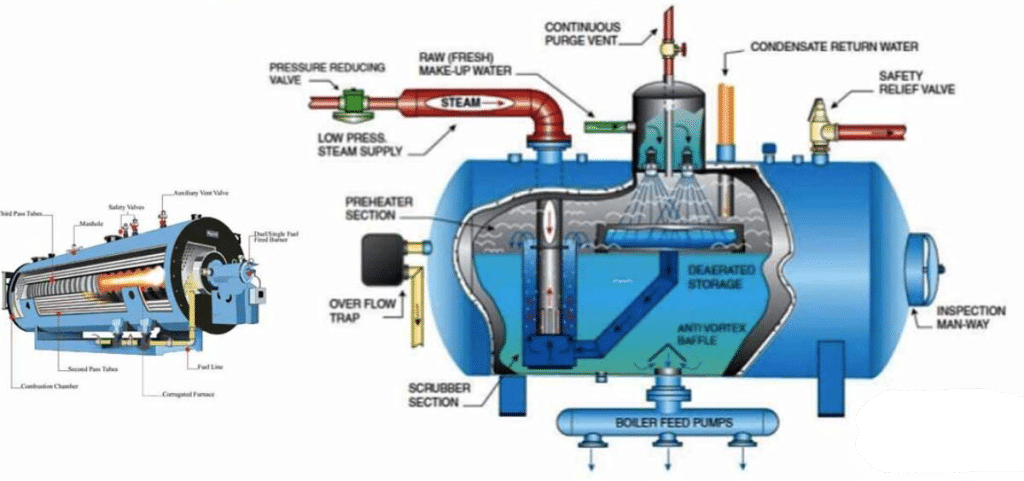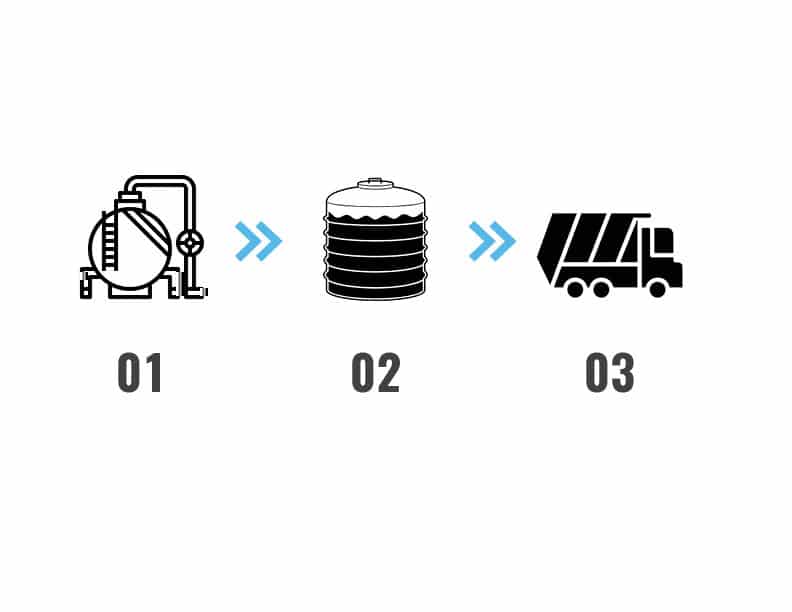The complete sterilization process inside a hospital starts with a system of industrial boilers. Industrial boilers are uniquely capable of meeting a wide range of steam requirements, while also conserving fuel and reducing emissions. They keep a hospital functioning efficiently through the distribution of steam which produces heat and hot water. This essential function keeps many behind-the-scenes processes, like laundering linens, kitchen operation, and in-room showers operational.

Prior to operation, or after major maintenance, every boiler must be “boiled out”. This chemical cleaning removes greases and foreign material that may have built up on internal surfaces and mechanisms. Boilers are constantly replenished with treated water and this process aids in its cleanliness and contributes to a long operational life for the equipment. Boil-out should not be performed until the boiler is hydrostatically tested and the installation of firing equipment and controls are in place. Boil-out, as part of regular maintenance of equipment, ensures safe operation and a long service life for the boiler.
Associated risks of the process are typical of situations involving chemicals and steam/hot water. Proper PPE for chemicals is required along with proper use of valves and drains to minimize contact with hot water. The last risk is the possibility of damaging mechanical equipment, due to chemicals remaining in the boiler, eliminated through the flush process.

Hourigan’s recent project with the Chesapeake Regional Medical Center (CRMC) in Chesapeake, VA has three boiler systems, each of which underwent a thorough boil-out procedure, including:
Boil-out procedures are fairly formulaic, but the CRMC team had to get creative during disposal. Historically, wastewater from this process could simply be drained, but in 2021, Hampton Roads Sanitation Department (HRSD) prohibited the disposal of wastewater associated with chemically cleaning new boilers into the wastewater system. HRSD now requires the post-boil-out water to be tested for chemicals and contaminates prior to being introduced into the sewer system to protect the water supply. Tests for many of these contaminates yield quick results; however, the required Biochemical Oxygen Demand (BOD) testing takes no less than 5 days to perform. During this testing period, the water cannot be released into the regular sanitary sewer system and must be stored on-site. After the water passes the chemical testing, and it meets the BOD level requirements, it can be discharged into the sewer system. This may seem like a long testing period, but it’s one we are happy to oblige. Having this water tested before disposing of it allows us to know we are suppling healthy water back into the sewer system. It’s nice knowing we are doing what we can to support a healthy water supply.
While the amount of water stored in a typical boiler varies greatly depending on the needs of the individual system, the CRMC boilers hold 10,000 pounds of water per hour each. That equates to about 1,200 gallons of water per boiler. To put that into perspective, a family of four would use about 1,200 gallons of water in roughly 10 months of living; so, the amount of water we were looking to temporarily store could sustain the needs of three households for nearly a year.
Herein lies our quandary. What do we do with all this water?

Method One
Store the water within the boiler during the testing period then drain it into the sewer system. This option was rejected because the NAFCO advised the team that this option could potentially undo the boil-out or cause damage to the boiler itself.
Method Two
Provide a holding tank for the water while it’s being tested then drain it into the sewer system. This method comes with high risk of additional costs. If the test fails, a waste disposal company would need to be engaged to remove the water, pay rental fees for the tank, and find extra space to houses this temporary storage.
Method Three
Contract a waste removal company to remove the water from the boilers. Contaminated water is then brought to a water treatment plant where tests are performed to determine if any treatment is necessary. After the water is disposed of, the plant provides documentation of the steps taken to treat the water, if required. In our case, additional treatment was not required, and subsequent boil-off wastewater was dumped at the wastewater treatment plant without treatment. Choosing this method came with a low risk of further costs and a lower opportunity to damage the boilers.
Find the Solution that Works Best for You
Having a safe and energy efficient boiler and boil-out method is significant in keeping the boiler itself in good working condition and benefits the hospital by ensuring its operational health. Purchasing the right boiler for a hospital or medical facility is a huge undertaking and an expensive one. However, instead of trying to find the cheapest solution, it’s best to choose one that will help the facility save money in the long run.
Problem solving, conducting research, and finding the ultimate solution for our clients is where our team thrives. Combining these efforts and having a phenomenal team makes the tough decisions easier to make.
Previous Post Next Post